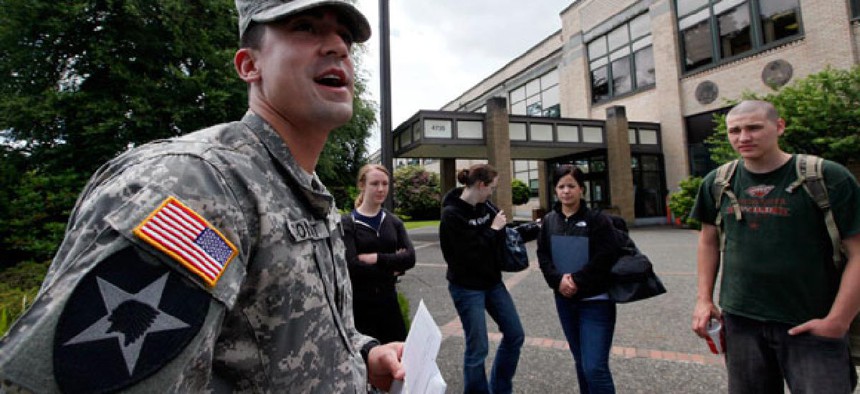
Elaine Thompson/AP
Selective Service not equipped to handle a draft, watchdog finds
The agency would need 285 days to round up the troops.
After years of Defense Department neglect, the Selective Service System doesn't have enough personnel or resources to induct service members in the event the military draft is reinstated, according to a Government Accountability Office investigation.
The report, sent Thursday to the heads of the House and Senate Armed Services Committees, faults Defense for not re-examining its draft policies or taking a closer look at the Selective Service System since 1994. This is despite the fact the agency is charged with keeping an active record of all American males eligible for service. Selective Service’s role has been significantly diminished since Defense established all-volunteer armed forces in 1973.
In the event of a draft, which would require Congress and the president to enact a law reinstating the practice, the agency would be required to hold a lottery to determine inductees according to age and birth date. All men between the ages of 18 and 25 are eligible for the draft.
The Selective Service System has cut personnel steadily since 1997. With a current staff budget for 130 full-time civilian employees and 175 part-time reserve forces officers, the agency would not be able to deliver the first draft inductees to Defense until 285 days after mobilization, according to GAO.
Selective Service’s requested budget for fiscal 2013 was $24.4 million. This is down significantly in adjusted dollars from $22.9 million in fiscal 1997, which would equate to $31.5 million today, according to GAO. While the Selective Service System database contained 16.4 million names in 2010 and added 2.2 million in 2011, officials told GAO that a lack of personnel to set up area offices nationwide would make the actual induction process an arduous one.
In interviewing Selective Service System officials about potential alternatives to their agency, GAO found difficulties in replicating a database of eligible service members. Though other government agencies -- including the Social Security Administration, Department of Motor Vehicles and Census Bureau -- maintain similar databases of U.S. citizens, each has inherent flaws. A database of all Social Security participants, for example, would neglect immigrants with no Social Security number.
GAO recommended Defense once more evaluate its Selective Service requirements to account for the current state of national security and to “establish a process of periodically reevaluating these requirements.” Though a Quadrennial Defense Review is issued every four years, the review does not include an analysis of the draft database.
Defense concurred with GAO’s recommendations.






